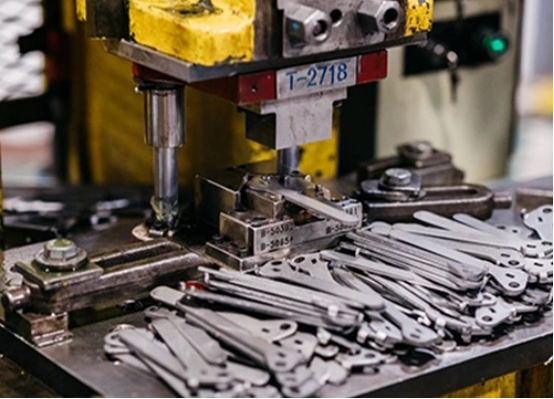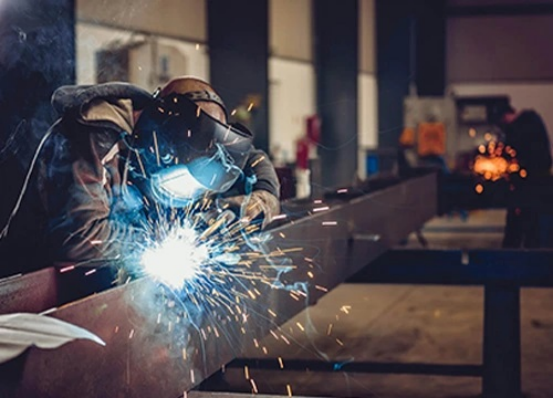China sheet metal fabrication Processes are widely used in aviation manufacturing. Different China sheet metal fabrication processes have their own unique characteristics and comparative advantages and disadvantages.
Stamping Process
Stamping is one of the common China sheet metal fabrication processes. Its characteristics are suitable for mass production, high efficiency, and high precision. Stamping can achieve the forming of complex curved structures but it can also easily introduce stress concentration problems, requires high material standards, and has high costs.
Bending Process
The bending process can achieve the bending and shaping of structural parts and is suitable for manufacturing structural parts with multiple angles and straight lines. Its advantages are simple operation and low cost, but it is difficult to meet the forming needs of complex curved structures.
Deep Drawing Process
The deep drawing process is suitable for manufacturing parts with a large forming depth, which can improve the strength and hardness of structural parts. However, it is prone to defects such as wrinkling and local deformation during the drawing process, requiring precise parameter control to ensure product quality.
Rolling Process
The rolling process achieves material formation through rolling and is suitable for the processing of long strip materials. Its advantages are improving the plastic deformation ability and surface quality of the material, but it requires high equipment standards and has a narrow application range.
Comparing the applications of China sheet metal fabrication processes in aviation structural manufacturing can help us better understand the performance and effects of different processes in actual production.
Stamping Forming
Stamping is suitable for producing large quantities of simple-shaped aviation structural parts. Large panels like aircraft fuselages and wings typically use the stamping process for forming. Through mold design and adjustment, efficient and precise production can be achieved, enhancing production efficiency and product quality. Stamping processes are widely used in aviation manufacturing, providing significant support for the production of large aircraft.
Bending Forming
Bending is a common China sheet metal fabrication process, suitable for producing aviation structural parts with complex shapes and variable angles. Parts like aircraft doors and flaps typically use the bending process for forming. The bending process can achieve various angle-forming needs and can realize high-precision processing through numerical control equipment, ensuring the assembly precision and stability of the product.
Deep Drawing Forming
Deep drawing is a China sheet metal fabrication process suitable for producing curved structural parts and has important applications in aviation manufacturing. Parts like aircraft engine shells and floor beams usually use the deep drawing process for forming. The deep drawing process can meet the forming needs of complex curves, ensuring the strength and stability of the product. At the same time, the deep drawing process requires strict control of drawing force, temperature, and other parameters during the forming process to ensure product quality and performance.
Welding Forming
Welding is a process that connects multiple sheet metal components through heating, melting, and solidifying, suitable for producing large and complex aviation structural parts. Large structural parts like aircraft fuselages and tails typically use the welding process for forming. The welding process can achieve the connection needs of multiple components while requiring control of welding parameters to avoid welding defects and to ensure product strength and sealing.

